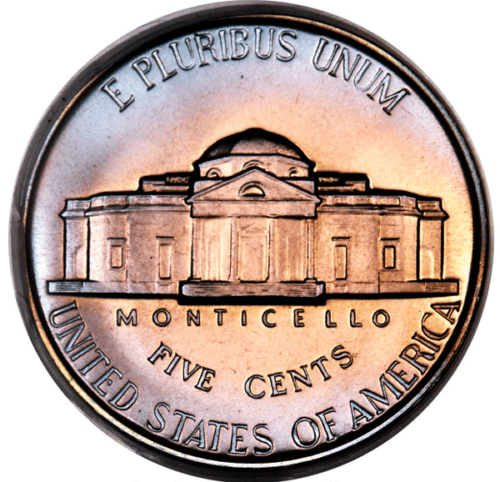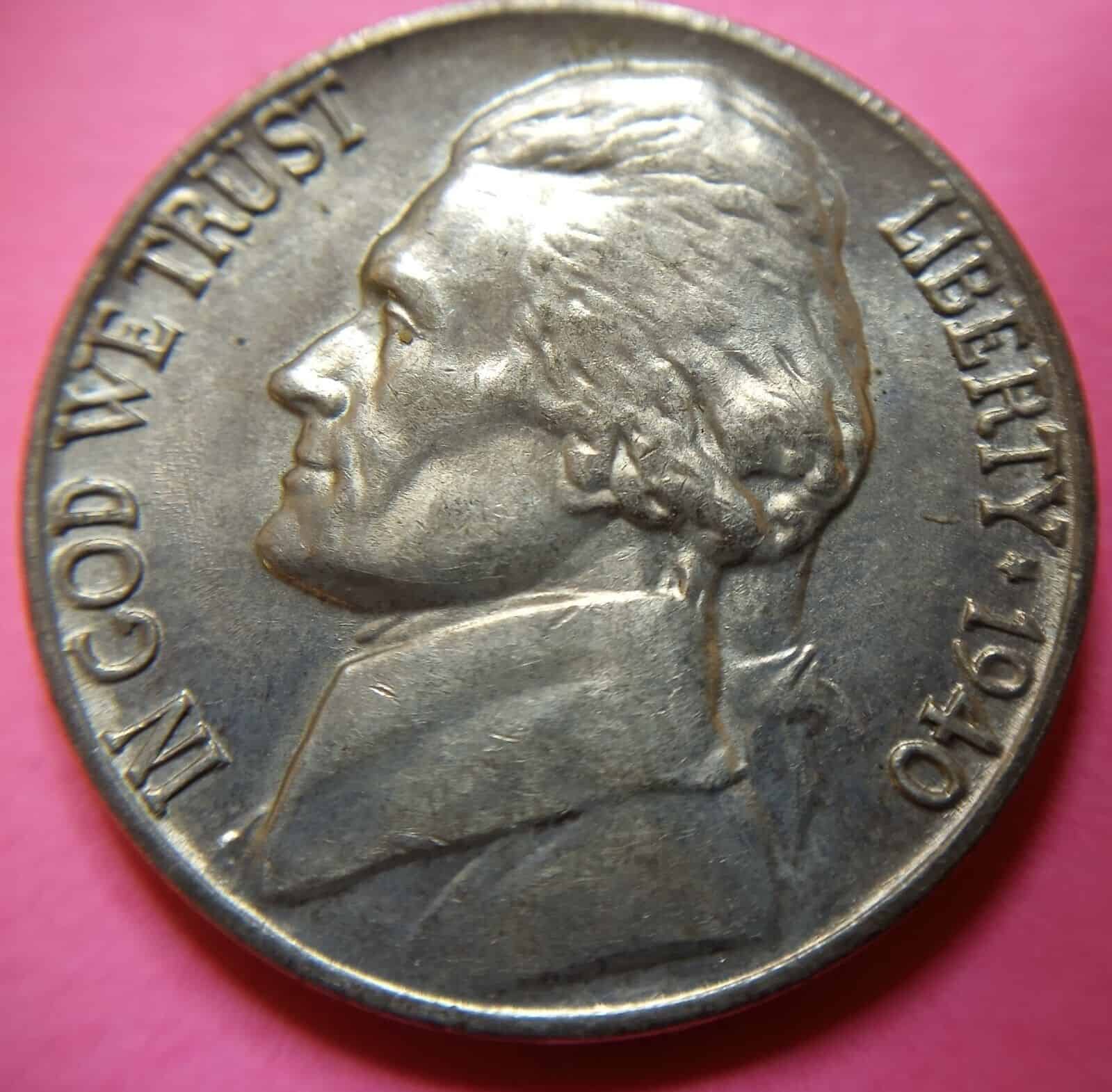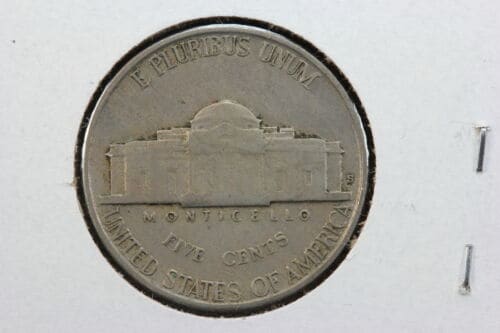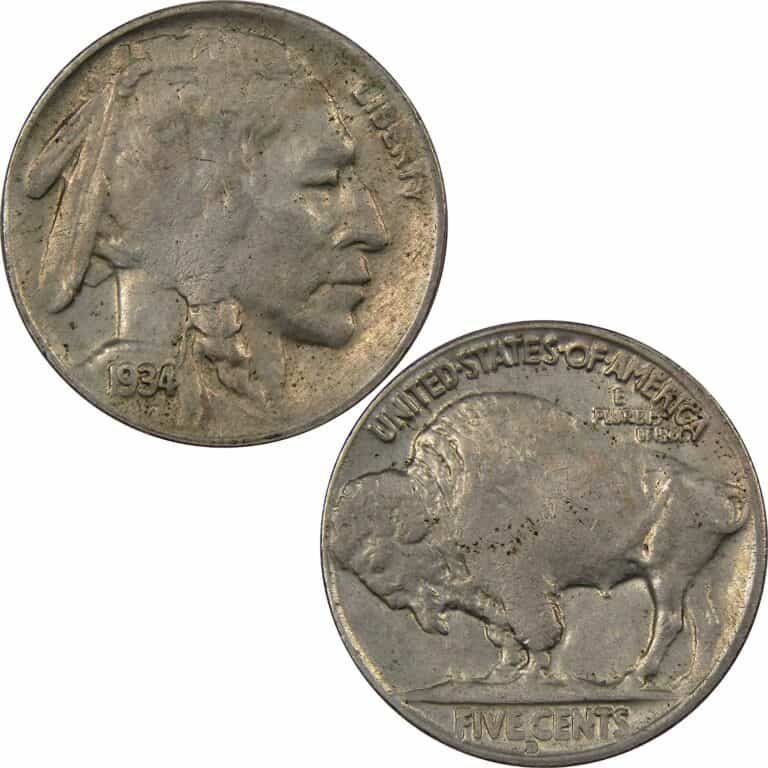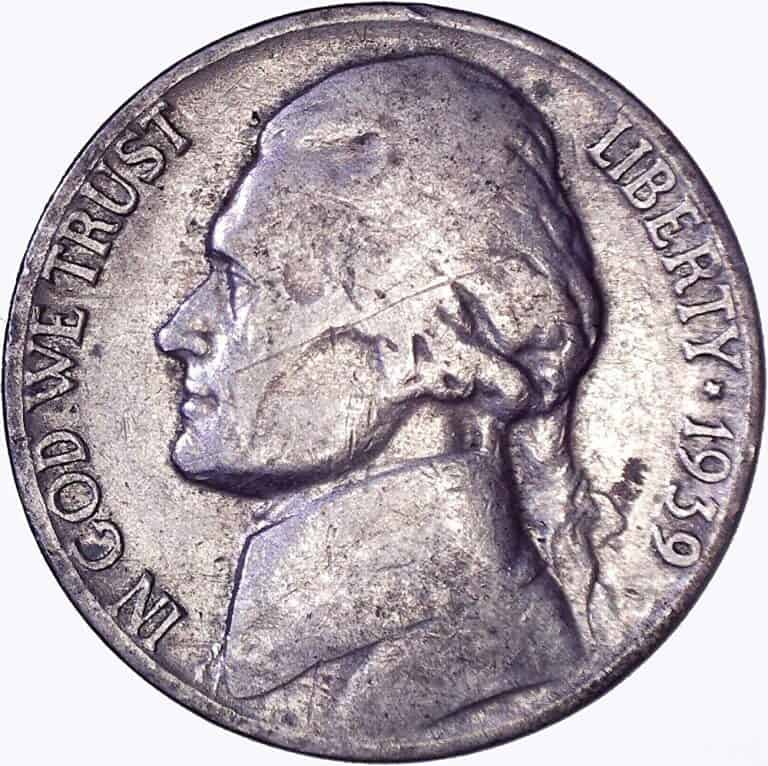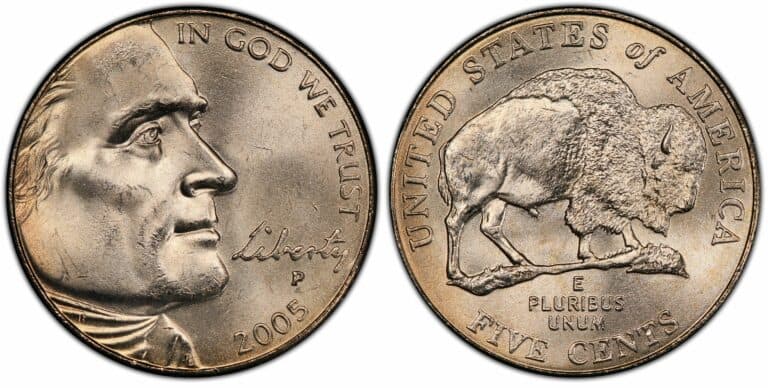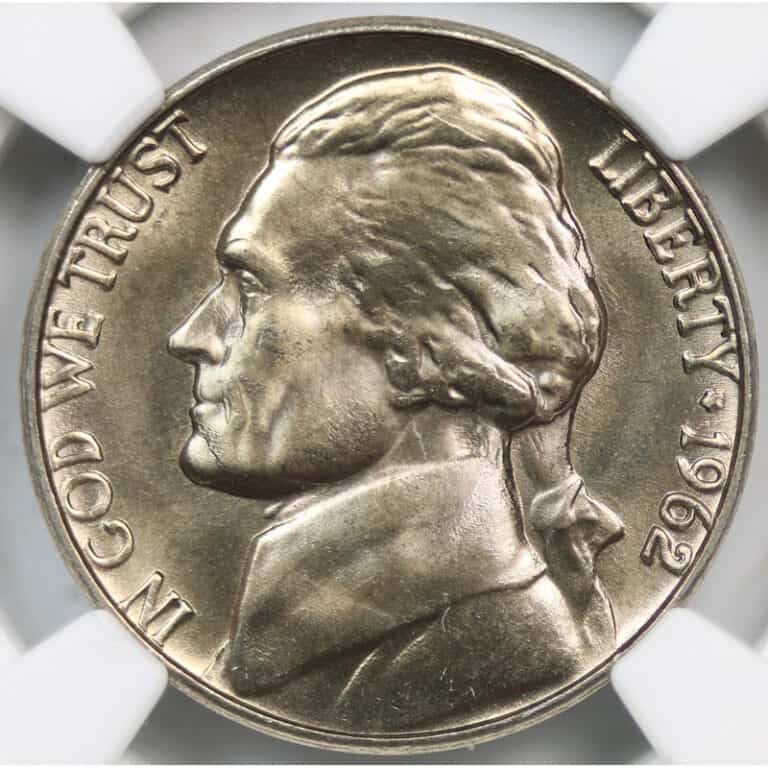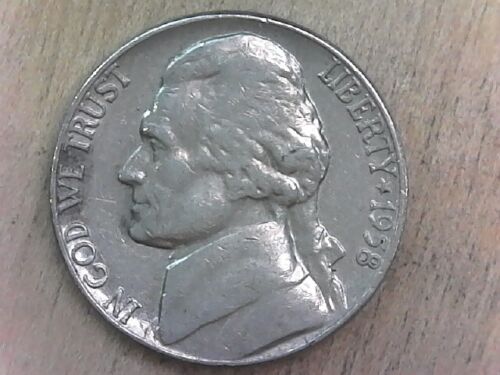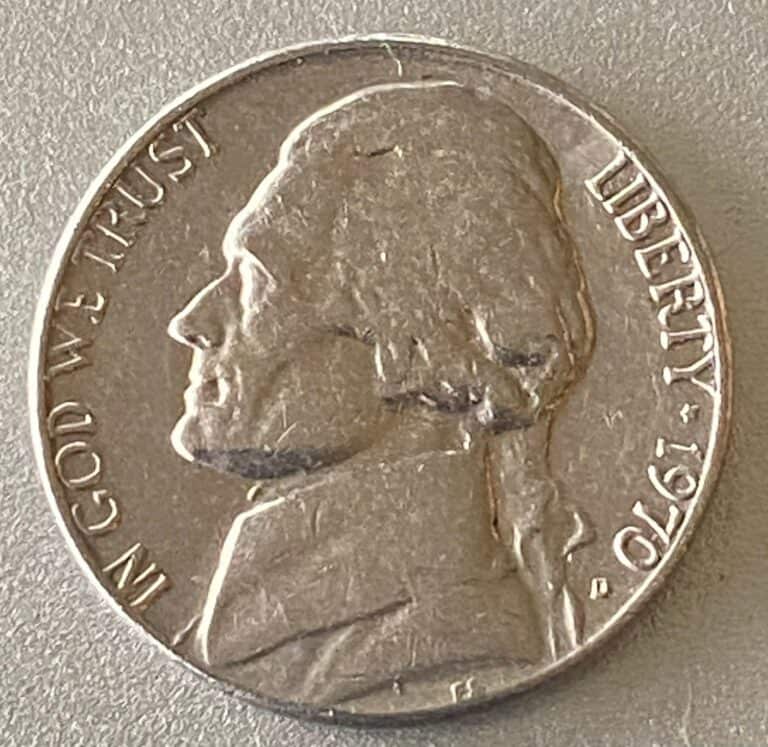1940 Nickel Value: How Much Is It Worth Today?
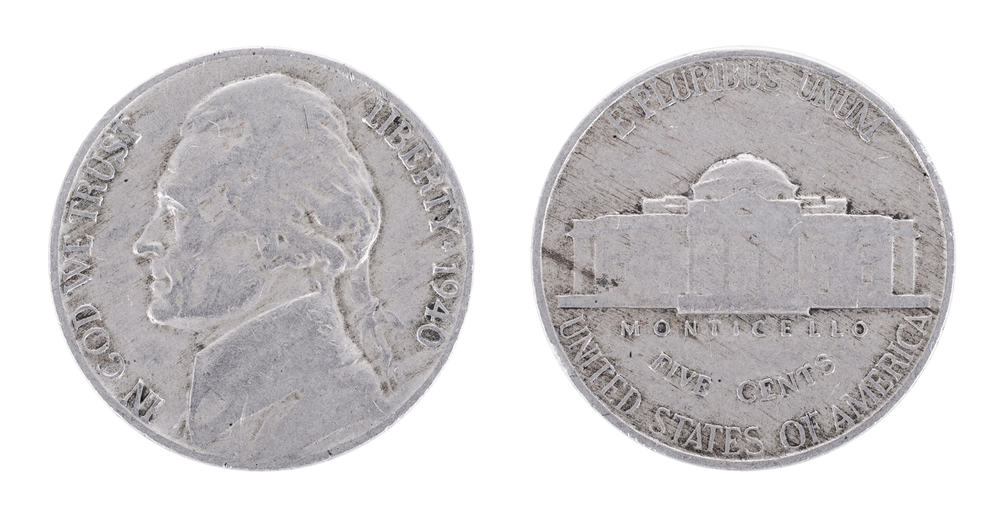
The 1940 nickel features President Thomas Jefferson on the front and his Monticello estate on the back. And, depending on its condition – or error – it can sell for as much as $28,750.
The good news is you may be the one to top this record-breaking auction price. All you just need to do is determine your 1940 nickel value, which you can easily do so by reading this guide.
1940 Nickel Value Chart |
|||||
| Mint Mark | Good | Fine | Extremely Fine | Uncirculated | Proof |
| 1940 No Mint Mark Nickel | $0.11 | $0.23 | $0.57 | $1.75-$17 | $123 |
| 1940 D Nickel | $0.11 | $0.23 | $0.81 | $2.88-$17 | n/a |
| 1940 S Nickel | $0.11 | $0.23 | $0.81 | $2.61-$17 | n/a |
1940 No Mint Mark Nickel Value
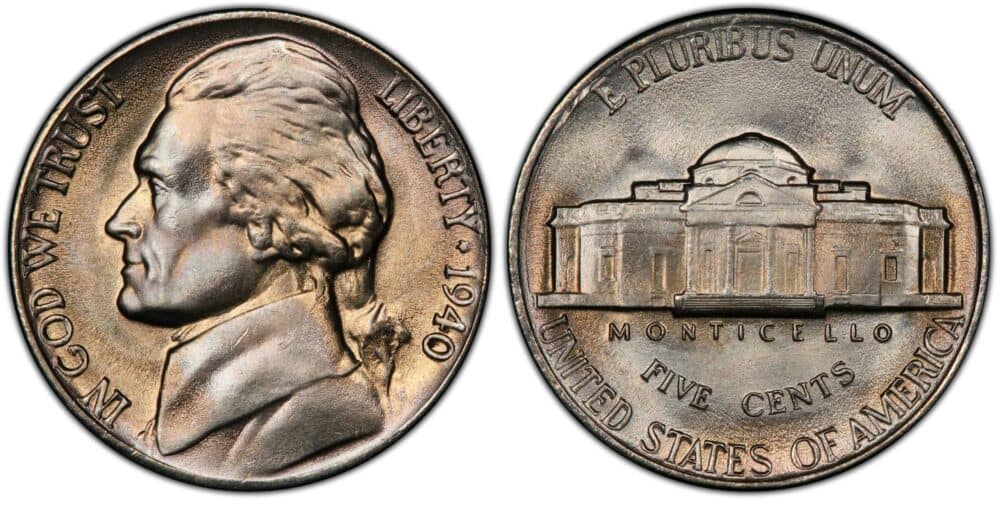
1940 no mint mark nickel was manufactured in Philadelphia to the quantity of 175,499,158. This plain-edge coin is made with 75% copper and 25% nickel, thus giving it a hefty weight of 5 grams.
The coin has a diameter of 21.2 mm and a thickness of 1.95 mm.
Design
1940 no mint mark nickel is known as the Jefferson nickel, a coinage first released two years prior. It was released in preparation for Jefferson’s birth bicentennial last 1943.
It replaced the Buffalo nickel, which the US Mint branded as ‘hard to coin’ because of constant die breakage.
True to its name, this coin features Thomas Jefferson on the obverse.
Sculptor Felix Schlag depicted the founding father’s image. He bested 389 other hopefuls, whose designs were all judged by US Mint Director Nellie Tayloe Ross and three other sculptures. As the winner, Schlag took home the Mint’s prize money of $1,000.
The sculptor’s design featured Jefferson’s left-facing profile, which many believe was based on the bust created by sculptor Jean-Antoine Houdon.
The obverse side also includes the motto in “God We Trust” on the left and the word “Liberty” and “1940” on the right.
Schlag’s reverse design, meanwhile, features Jefferson’s Monticello Estate. The motto “E Pluribus Unum” is on the top arc, while the mansion’s name, “Monticello,” is scribbled below the building.
Below “Monticello” are the terms “Five Cents” and “United States of America.”
Due to some unknown reason, Schlag failed to include his initials on the design. Eventually, his initials were added to the Jefferson Nickel in the year 1966. These can be found underneath Jefferson’s portrait.
Value
A good condition 1940 no mint mark nickel is worth $0.11, while a fine condition coin is worth $0.23. Extremely fine coins, meanwhile, are valued at $0.57.
Uncirculated 1940 no mint mark nickels may sell for $1.75 to $17, depending on their grade.
Proof coins, meanwhile, are valued higher at $123. That’s because only about 14,158 coins were minted in Philadelphia that year.
That said, you can make thousands of bucks over your 1940 no mint mark nickel – granted that it has full steps on the reverse. This designation is given to coins that maintain five or six steps on the Monticello building.
In 2018, an MS 68 grade coin sold for $6,463 in 2016.
1940 D Nickel Value
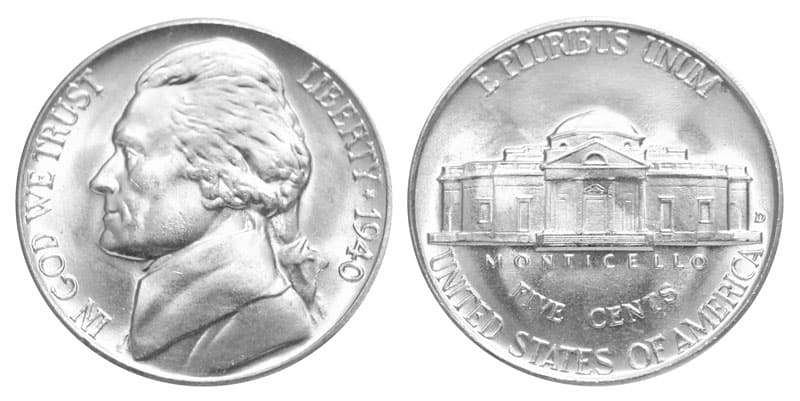
Around 43,540,000 1940 D Nickels were minted in Denver. They are just some of the millions of circulating, commemorative, and numismatic products manufactured by the location that year.
Despite this large quantity, a handful of D nickels have been preserved at mint state. Those lucky enough to find such coins may sell them for as much as $21,738 at auction.
Design
The 1940 D nickel bears the same design/composition as the coins minted in Philadelphia. On the front, you’ll find the image of Thomas Jefferson.
Jefferson is heralded as a founding father – and the third president of the US. He was the primary author of the Declaration of Independence, as well as a former vice president and secretary of state.
As for the reverse, it bears the Monticello estate, which is Jefferson’s plantation based outside Charlottesville, Virginia. This National Historic Landmark is erected on the land he inherited from his father at age 26.
The back side also features the text “Et Pluribus Unum.” The building’s name, as well as the denomination “Five Cents” and “United States of America,” are situated below the mansion.
What makes the 1940 D nickel different is that it bears a notable “D” mint mark on the reverse. The letter is conspicuously located next to the depiction of the Monticello Estate.
Value
The 1940 D nickel is worth $0.11 in good condition and $0.23 in fine condition. An extremely fine coin is valued at $0.81, while uncirculated coins may sell for $2.88 to $17.
Like the example above, the 1940 D nickel can also sell for a huge sum – as long as it has full steps on the reverse. In fact, one such coin graded MS 68 sold for $21,738 in an auction last 2018.
1940 S Nickel
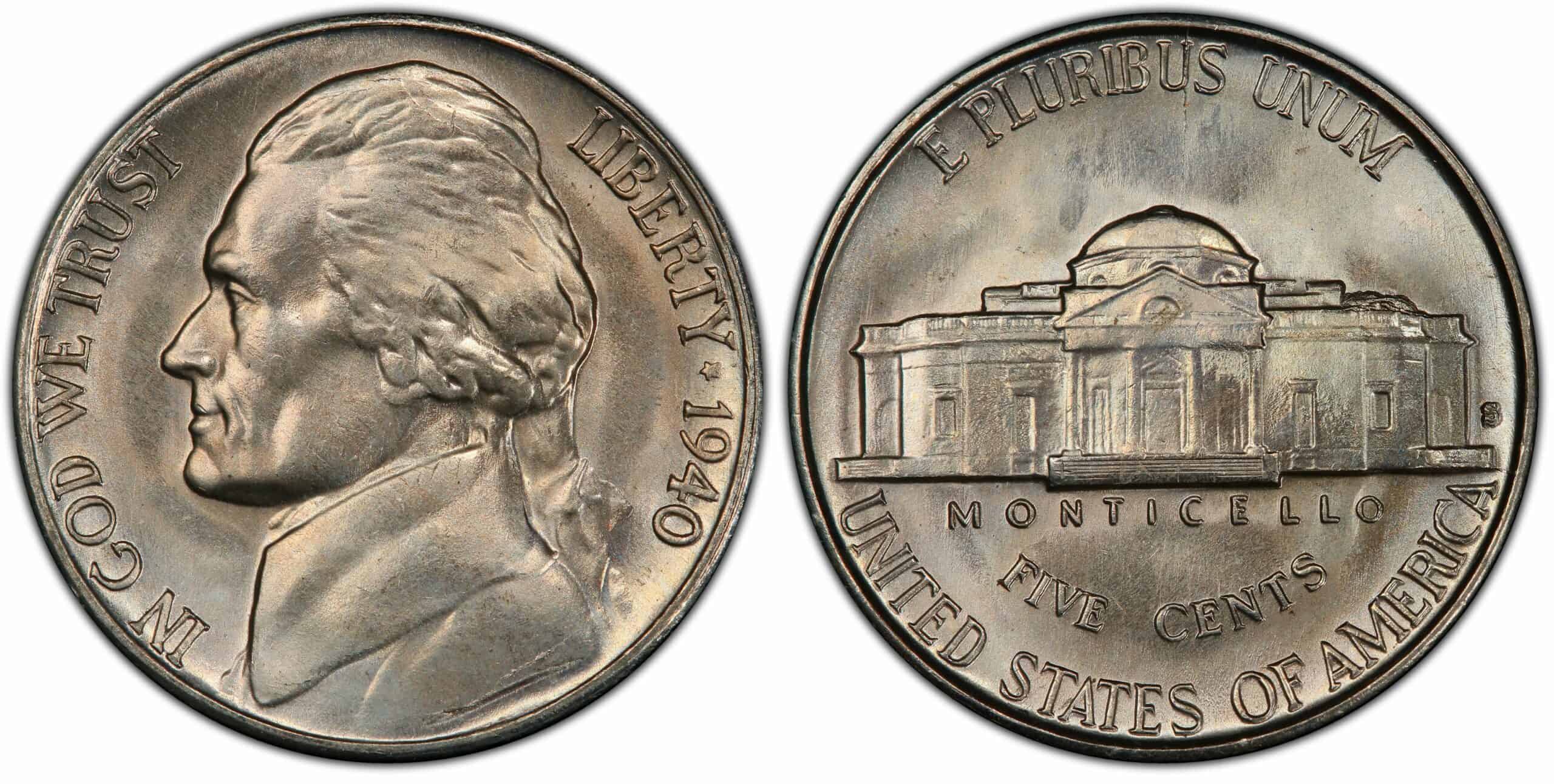
In 1940, San Francisco minted 39,690,000 pieces of S nickels. Seemingly deviating from tradition, these coins were made to be circulated – unlike most of the San Francisco coins that were usually released as collector’s items.
Like the two other coins in this list, the 1940 D nickel has a diameter of 21.2 mm and a thickness of 1.95 mm. It is made with 75% copper and 25% nickel and weighs about 5 grams.
A few years after the release of the 1940 nickel, this copper-nickel composition had to be revised due to metal demand/shortage. The result is the wartime nickel, which ran from 1942 to 1945. It is composed of 56% copper, 35% silver, and 9% manganese.
Design
The 1940 S nickel features a design you can expect from Jefferson nickels of that time. It has Jefferson’s portrait on the front and his Monticello estate on the back. You can also find the “S” mint mark on the reverse side.
It is interesting to note that the back design wasn’t the original drawing that Schlag submitted to the US Mint. He initially drew a ¾ view of the Monticello – plus a palm tree.
Officials disliked the said design due to a variety of reasons. For one, they thought of the lettering as too modern. Moreso, they believed that Jefferson wouldn’t grow a palm tree on his estate.
And they were right. Jefferson’s plantation mostly grew peach, apple, and cherry trees.
Because of these reasons, the US Mint officials asked Schlag to change the design in May 1938. Since he was swamped with many other projects, he couldn’t submit the changes until June.
Schlag’s ‘improved’ design, which featured the full portrait of Monticello, was eventually approved in July 1938. Production of the coins started a few months after, in October, and they were officially released the following month.
Schlag’s revised image stayed on the Jefferson nickel until 2003 when it was replaced by the Westward expansion design.
The Monticello reverse was eventually reinstated in 2006, where it remains depicted to this day.
Value
The 1940 S nickel’s value is similar to the two other coins, at least for good ($0.11) and fine ($0.28) conditions. Likewise, the value of its extremely fine coin remains at $0.81, similar to the 1940 D nickel.
Uncirculated 1940 S nickels are worth about $2.61 to $17.
1940 Nickel Value Grading
The 1940 Jefferson nickel is graded according to its color, appearance, etc. About uncirculated coins, for example, should only show a trace of wear on the obverse and reverse sides. Because of this grade, these coins often sell for higher prices at the market.
Good condition coins, meanwhile, have worn designs, so they have very little detail. As such, these nickels sell for a lower price.
Rare 1940 Nickel Error List
1940 nickels sell for a huge deal of money when they are preserved well. That said, coins with some wear and tear may sell for a higher price too – granted they possess any of these errors:
1940 Proof Jefferson Nickel Reverse 1938 Error
Some proof coins minted in Philadelphia were imprinted with the old 1938 die. The result? Softer details on the reverse. After all, this die had weak, curved step details.
To the trained eye, this mistake can be easily spotted in the center – where the last step is located. A 1938 reverse features a significant curve compared to the ‘improved’ 1940 reverse design.
Despite this seemingly poor appearance, this error has sold for huge sums in auctions. It’s very scarce, after all!
Unsurprisingly, a proof nickel with this error was auctioned off for a whopping $28,750 in 2011.
1940 Nickel Doubled Die Error
Doubled die coins result from misshapen dies. The error lies on the die itself, so it shows when a coin is produced. The images or letters may be doubled depending on the die’s anomaly.
The doubled die error can affect the obverse or the front part. In such instances, you’ll notice doubling on the word “Liberty,” the motto “In God We Trust,” as well as the date (1940.)
The doubling can also be seen on the reverse side. Depending on the error, the mistake can be found in the phrase “E Pluribus Unum,” “Monticello,” “United States of America,” and/or “Cent.”
According to the PCGS, a coin with this error was auctioned off for $4,600 last 2022.
1940 Nickel Repunched Mint Mark Error
A repunched mint mark error occurs when the letter punch generates two or more offset impressions. There is no mint mark on coins generated in Philadelphia, so you will often see this mistake on 1940 D or S nickels.
An MS 65 1940 S nickel with such a deviation has sold at auction for $350.
1940 Nickel Off-Center Strike Error
An off-center strike error may be common, but it still sells for a pretty price. Such is the case for the 1940 Jefferson nickel, whose value depends on how off-center the error is.
This type of anomaly occurs when the planchet is improperly positioned. So when the coin is struck, the design is only partially imprinted on the planchet – so part of the coin design is missing.
A 5% to 10% off-center strike coin will sell for $10 to $20, while a 50% off-center strike coin may go for as much as $100.
1940 Nickel Value FAQs
Are any 1940 nickels valuable?
Yes, many 1940 nickels are quite valuable. For example, high-grade coins (MS 68) can sell for thousands of dollars. An MS 68 1940 no mint mark nickel sold for $6,463, while a 1940 D nickel was auctioned off for $21,738.
1940 nickels with errors sell a lot too. A good example is the 1940 nickel with the 1938 reverse, which was auctioned off for $28,750.
Is a 1940 nickel pure silver?
No. The 1940 nickel is made with 75% copper and 25% nickel. The wartime nickels, which were manufactured from 1942 to 1945, are the ones that contain 35% silver.
How much is a 1940 D Jefferson Nickel worth?
The value of a 1940 D Jefferson nickel depends on its condition:
- Good: $0.11
- Fine: $0.23
- Extremely fine: $0.81
- Uncirculated: $2.88 to $17
- High grade (MS 68): $21,738
What are the errors on a 1940 nickel?
Some of the errors you can spot on a 1940 nickel include:
- 1938 reverse, worth $28,750
- Doubled die, worth about $4,600
- Repunched mint mark, worth about $350
- Off-center strike, worth $10 to $100
What is the mint mark on a 1940 nickel?
The 1940 nickel mint mark can be found on the right part of the reverse side, near the Monticello Building.
